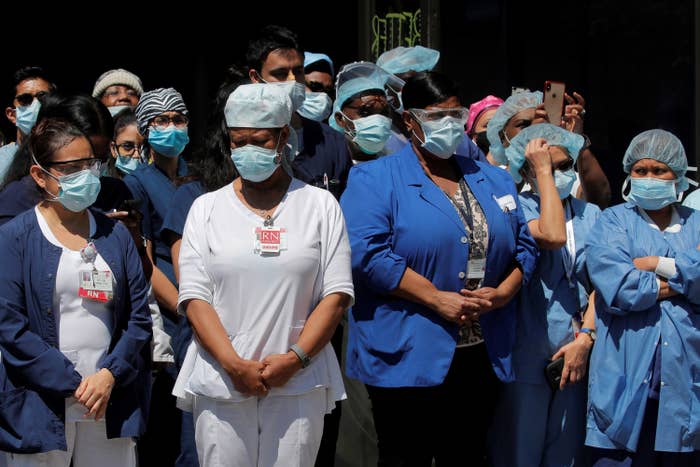
The journalists at BuzzFeed News are proud to bring you trustworthy and relevant reporting about the coronavirus. To help keep this news free, become a member and sign up for our newsletter, Outbreak Today.
The United States' health care industry is losing billions of dollars every week during the coronavirus pandemic, resulting in widespread layoffs and furloughs as waiting rooms lie paradoxically empty during an unprecedented health crisis.
The country’s hospitals and health systems are expected to lose $202.6 billion from March 1 to June 30, according to a new report from the American Hospital Association, which is advocating for federal relief funds for hospitals.
“It is a catastrophic number,” Aaron Wesolowski, the AHA’s vice president of policy research, analytics, and strategy, told BuzzFeed News. “It’s clear there are going to be serious financial consequences for hospitals and health systems.”
“It is a catastrophic number.”
Other than treating the coronavirus, hospitals have come to a virtual standstill during the outbreak. Governors around the country have asked hospitals to cancel nonessential procedures and elective surgeries, operations that account for a significant share of hospital revenues. Meanwhile, stay-at-home orders have discouraged people from making doctors’ visits.
As a consequence, hospitals around the country have announced layoffs, reduced hours, and furloughs of doctors, nurses, technicians, administrative staffers, and other workers to offset the losses. The AHA said hospitals are also racking up expenses, such as purchasing personal protective equipment and supporting frontline workers' childcare, transportation, housing, and screening and treatment for COVID-19.
Those impacts are being felt in other parts of the health care sector, not just hospitals. Across the industry, employment declined by 1.4 million jobs in April, according to the Bureau of Labor Statistics, including large job losses in offices of dentists (503,000) and physicians (243,000).
“It’s been pretty devastating to nurse practitioners. Many have been furloughed,” Sophia Thomas, president of the American Association of Nurse Practitioners, who also works as a nurse practitioner in New Orleans, told BuzzFeed News. “Most nurse practitioners work in the outpatient setting, and those clinics are very slow right now. They’re trying to switch to telehealth, but in certain places it’s been very slow on the uptake primarily due to the technological limitation of patients.”
Federal stimulus money could prop up the industry and stanch the bleeding but might not be able to do more. The bills passed in the wake of the pandemic allocated $175 billion to hospitals and other health care providers, but the losses have “exceed[ed] the funds hospitals have received in relief payments to date, and are larger than the total amount of potential relief payments for them as well,” said Wesolowski.
A report released Tuesday by the Johns Hopkins Center for Health Security drew a similar conclusion: “Until there is a vaccine, there will be ongoing public fear of contagion at healthcare settings, which may result in sustained decreases in patient volume beyond the immediate response and recovery to the pandemic. It is not clear that the funds authorized so far are enough to cover all the losses incurred to date, much less the ongoing losses that the health sector will continue to experience.”
Wesolowski said: “I think it’s reasonable to expect that it’s going to take a while to rebound. When hospitals start offering elective surgeries again, all of that volume won’t come back in at once. And it depends on whether there are subsequent waves [of the coronavirus].”
Like the pandemic, the financial toll has not been evenly distributed across the country. Rural hospitals, which had been struggling financially for decades, lost up to 80% of their revenue when they suspended elective procedures and outpatient care. Alan Morgan, CEO of the National Rural Health Association, told BuzzFeed News that the federal stimulus money was helping, but only barely. “Rural hospitals nationwide now are able to keep their doors open through the end of June," he said.
It's still unclear how the pandemic will play out in the rest of 2020; there could be sustained small outbreaks or a large second wave. Health systems may take a different approach at that time due to increased availability of testing.
Eric Toner, senior scholar with the Johns Hopkins Center for Health Security, told BuzzFeed News hospitals could make more informed decisions about if and when to cancel nonessential and elective procedures.
“The problem was in, say, rural Texas, you canceled elective surgeries and for two months the hospitals were empty," he said. "There was nothing for their staff to do, so they ended up furloughing them." With increased testing capacity, “they could wait until they saw evidence of COVID in their communities before they cancel those surgeries.”
